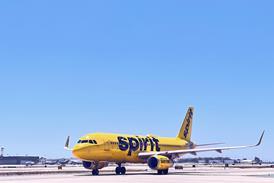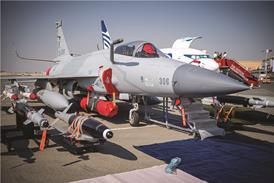Investigators have concluded that an incorrectly-set cabin pressurisation switch, and the failure to recognise warnings of oxygen depletion, led to the fatal loss of a Helios Airways Boeing 737-300 aircraft in Greece last year.
The final report into the accident, released today, shows that the crew did not realise that the pressurisation selector was in the ‘manual’ position while carrying out pre-flight procedures or while reading checklists – it says the switch could have been left in the ‘manual’ position, rather than returned to the ‘automatic’ position, during non-scheduled maintenance.
Helios flight ZU522 departed the Cypriot city of Larnaca for Prague on 14 August last year with 115 passengers and six crew members. But the aircraft failed to pressurise as it climbed to cruise altitude, incapacitating the crew and leading to the 737’s crashing as the engines ran out of fuel.
Aside from the immediate contributory factors the final report identifies four latent causes of the accident, including deficiencies in the operator’s organisation, safety culture and quality management.
It cites “inadequate application” of crew resource management principles. The investigators also list “ineffectiveness of measures” taken by Boeing in response to previous pressurisation incidents on the aircraft type.
But the report also points to a creeping, underlying failure of safety oversight by regulatory authorities.
As the Helios 737 was climbing through 16,000ft (4,850m) – having been cleared to flight level 340 (34,000ft) – the captain contacted the company’s operations centre to report a take-off configuration warning and a problem with the equipment cooling system.
Passenger oxygen masks deployed in the cabin as the aircraft climbed through 18,200ft. But the inquiry report says that the flight crew failed to identify cabin-altitude warnings and did not notice indications that mask deployment had occurred.
Over the following eight minutes, several communications between the captain and the operations centre took place regarding the original problems relayed to the operations centre. But these ended as the 737 climbed through 28,900ft – after which there was no response to radio calls, the crew having succumbed to hypoxia as the aircraft failed to pressurise.
Investigators state that lack of cabin crew procedures to address the loss of pressurisation, and continuation of the climb despite the deployment of masks, contributed to the accident.
The 737 automatically followed its pre-programmed course, levelling at FL340 and overflying the Kea VOR, southeast of Athens, at 10:21 – 74min after take-off.
It passed Athens International Airport and subsequently entered the holding pattern for the Kea VOR, where it remained.
Lockheed Martin F-16 fighters from the Hellenic Air Force intercepted the jet at 11:24, 46min after it first entered the hold, while the 737 was performing its sixth cycle in the pattern.
One of the F-16 pilots reported that the captain’s seat was not occupied and that a person in the first officer’s seat was slumped over the instruments. The pilot also reported seeing deployed oxygen masks in the cabin and three motionless passengers, seated in the cabin, wearing them.
Twenty-five minutes after interception, with no radio response from the 737, the F-16 pilot saw a person without a mask enter the cockpit and sit in the captain’s seat. The F-16 pilot was unable to attract the individual’s attention.
One minute later, fuel exhaustion caused the left CFM International CFM56 engine to stop operating, and the aircraft began descending. Two unsuccessful ‘Mayday’ calls, made four minutes after the flame-out, were later discovered on the cockpit-voice recorder.
As the aircraft descended past 7,100ft, the right-hand engine succumbed to fuel depletion, having continued operating for ten minutes longer than the other powerplant. Three minutes later, at 12:03, the 737 struck terrain about 33km northwest of Athens Airport. None of those on board survived.
Helios Airways rebranded itself under a new name, A Jet, earlier this year.
Seven interim safety recommendations were made during the course of the investigation, including five to the US National Transportation Safety Board and Boeing. The final report says that four of these have already resulted in corrective actions.
The US Federal Aviation Administration, it adds, issued an airworthiness directive informing flight crews about improved procedures for pre-flight set-up of the cabin pressurisation system and better procedures for responding to cabin-altitude warning horns.
But the final report adds another 11 safety recommendations directed at the Cypriot government, the International Civil Aviation Organization, the European Aviation Safety Agency and the European Joint Aviation Authorities. These centre on correcting safety deficiencies relating to maintenance procedures, pilot training, organisational issues of the operator, and overall safety oversight.
Source: FlightGlobal.com























